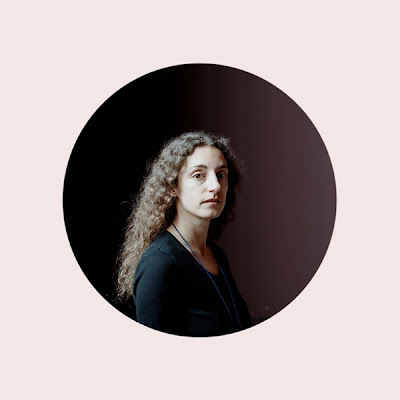Seduced by Art
National Gallery, 31
October 2012 – 20 January 2012
Rothko/Sugimoto
Pace Gallery, 4 October
– 17 November 2012
 |
| Irini II, photograph by Bettina von Zwehl. |
Exhibitions trying to
promote photographs over paintings only reveal the weaknesses in the former
medium.
The National Gallery exhibition specifically attempts to
display the influence of painting, specifically oil painting, on photographers.
The private Pace Gallery only compares Mark Rothko’s paintings and Hiroshi
Sugimoto’s photographs, though as the Rothkos are from private collections and
not for sale, I assume we are supposed to be concentrating on the photographs.
Primed by Brian Sewell’s ferocious attack on ‘Seduced by
Art’, I didn’t have high expectations, but I left feeling the old curmudgeon
had gone a little too far. That said, it is easy to think the curators were
biased against photography from the outset – to be seduced by art implies
photography is not itself art.
As if the title were a self-fulfilling prophecy, most of the photographs are indeed poor art.
This isn’t a case of good photographers being trumped by great painters, as it
might easily have been: many of the paintings for comparison were also poor.
But any of them had greater intrinsic interest than most of the photographs.
In contrast, at the Pace I felt that the curators did
Sugimoto no service by inviting comparison with Rothko.
Overall, both exhibitions rest on a false premise: that photography and oil painting are simply two different forms of visual art, much as oil paintings might hang next to drawings.
This assumption seems fairest with still life, which
celebrates the mere technique of the oil painter in depicting things. A good
photographer can do the same. This seems to confirm John
Berger’s idea that advertising photos
continue the oil painting tradition, in stressing the tangibility, and perhaps
desirability, of objects.
But everwhere else, and even in the best painted still lifes, there is the critical difference of composition.
A painter, with whatever technique, be it watercolour, fresco or computer generated images, must choose what to include, and can change details as necessary.
A photograph is first of all a record of something. The photographer can control composition to some extent, but almost every line and contrast and the way these connect is given, and cannot be changed without massive intervention.
Even portraits, where photos have taken precedence over
paint, are very different depending on the medium. A good photo portrait, like
any photo, captures a moment. A painting must necessarily capture something
different, and in the greatest portraits it seems to depict a context, or the
inner life.
As you’d expect, this difference is clearest in the
landscapes at the National, where even the trickiest modern efforts,
digitally compiling a view, are nonetheless required to be a documentary. This
is how the sky looked, or could look like.
Sugimoto supposedly photographs landscapes, but they are so
treated as to make them effectively abstract slabs of dark or light. In this
respect, I agree with the curators that he is aiming for something similar to
Rothko, in whose hands landscapes became completely abstract, and the
communicative aspect became intensely, almost too intensely, direct.
On its own, some of Sugimoto’s work is very effective. But despite apparent similarity with Rothko, the painter is much more powerful. Part of this is due to the irritating symmetry of the planes in the photographs compared to Rothko. But comparing the symmetrical Untitled, 1969 with the photos, I was struck by the differences in texture. Some of this is even captured in the comparison (a photo, so limited) offered by the Pace here.
The painting is composed. As we can see the brush strokes, we know it has been composed. That the artist wanted precisely this effect, at this point. I perceive the overwhelming effect of a Rothko being this sense of struggling to communicate. Sugimoto doesn't achieve this.
Some of the finest photos in Seduced by Art exploit this
difference between the media. An image cheekily entitled ‘the work of art in
the age of mechanical reproduction’, depicting various reproductions, and being
itself one, is amusing. A photo of people looking at a painting in such a way
that they merge with the painting’s scene, is an ingenious trompe l’oiel.
 |
| National Gallery I, London 1989, by Thomas Struth. From Tate. |
Another image arrestingly highlights the texture of Goya’s
portrait of Wellington, while perhaps the finest are von Zwehl's two tiny portraits of a
woman, where the lighting is so careful that for once it feels that a photo is
‘painting realistic’ rather than the other way round.
It’s a shame that Sugimoto’s photos weren’t displayed at the
larger exhibition, as they would have illustrated that photography can indeed
convey the same power as painting, in the hands of a serious, fine artist.
No comments:
Post a Comment